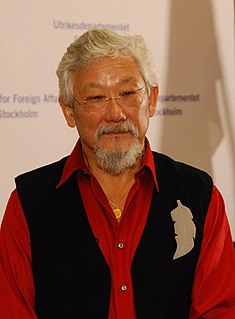A Quote by David Suzuki
There is a gyre of discarded floating plastic the size of the continental USA in the ocean. In it, plastic trash outweighs plankton 40 to 1.
Related Quotes
You go to a beach, you see a lot of plastic. It's out of the ocean, it stays out of the ocean, so that's good. But the thing is that in this Great Pacific garbage patch, this area twice the size of Texas, there's simply no coastlines to collect plastic. So the idea is to have these very long floating barriers.
I envisioned an extremely long network of floating barriers - they're like curtains floating in the ocean which are attached to the seabed. So what happens is that the current comes around and plastic gets pushed towards these barriers. And because it's in a V-shape, the plastic gets push towards the center.
There are five known gyres spinning around in our world's oceans. A gyre is a slowly moving spiral of currents created by a high pressure system of air currents. A spinning soup, so to speak, is made of what exists in the water. And in this case, the gyres are spinning with millions of tons of our discarded and forgotten about plastic waste!
About once a month, a vessel visits each of these clean-up systems, almost like a garbage truck of the ocean, would bring the plastic back to shore where it would then be processed and recycled into new products that we would then sell, at a premium, of course, because we could sell it as being made out of ocean plastic.





























